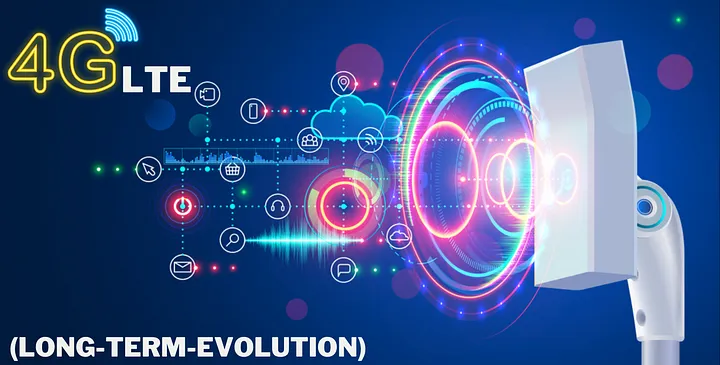Welcome to our series of articles on Disaster Management in Agriculture, where we explore the crucial role of this field in mitigating and responding to various agricultural crises. In this collection, we will delve into the fundamental concepts, practical applications, and cutting-edge technologies associated with disaster management in agriculture. As we progress, the articles will become more specialized and technical, equipping you with the necessary knowledge to navigate the complexities of this vital domain.
- What is Disaster Management in Agriculture?
Disaster Management in Agriculture refers to the comprehensive strategies, policies, and practices implemented to minimize the impact of natural and man-made disasters on agricultural systems. It encompasses preparedness, response, recovery, and resilience-building measures aimed at safeguarding food security, protecting livelihoods, and promoting sustainable agriculture.
- How does Disaster Management in Agriculture apply to local LTE?
Local LTE (Long-Term Evolution) plays a crucial role in Disaster Management in Agriculture by providing a reliable, high-speed, and dedicated communication network in disaster-prone agricultural areas. It enables efficient data transmission, real-time monitoring, and timely decision-making, facilitating coordinated responses and minimizing losses during emergencies.
- What are the local LTE roles for Disaster Management in Agriculture?
Local LTE networks for Disaster Management in Agriculture fulfill several key roles, including:
- Communication: Enabling seamless communication among stakeholders, including farmers, extension workers, government agencies, and relief organizations.
- Data Transmission: Facilitating the exchange of real-time data, such as weather information, crop health monitoring, and early warning alerts.
- Remote Monitoring: Allowing remote monitoring of agricultural assets, such as crop fields, irrigation systems, and livestock, to detect anomalies and respond swiftly.
- Coordination: Supporting efficient coordination and resource allocation during disaster response and recovery operations.
- What are the use cases of Disaster Management in Agriculture?
Disaster Management in Agriculture has diverse use cases, including:
- Early Warning Systems: Utilizing advanced technologies to predict and warn against impending disasters, such as floods, droughts, pests, and diseases, enabling proactive measures to protect crops and livelihoods.
- Crisis Mapping: Using geospatial data and remote sensing techniques to map affected areas, assess damage, and prioritize response efforts.
- Decision Support Systems: Employing data analytics and modeling tools to generate insights and recommendations for informed decision-making during disaster situations.
- Climate Resilience: Integrating disaster management practices with climate change adaptation strategies to build resilient agricultural systems capable of withstanding future challenges.
- What is the mechanism and why is local LTE required?
Local LTE operates through the deployment of private cellular networks, providing dedicated coverage for disaster-prone agricultural areas. These networks rely on LTE technology to establish robust connectivity, enabling seamless communication and data transmission among stakeholders. Local LTE is required due to the limitations of existing communication infrastructure in remote agricultural regions, where disasters can severely disrupt conventional networks. By establishing their own private LTE networks, agricultural stakeholders can ensure uninterrupted communication, data exchange, and timely decision-making, thereby enhancing disaster management efforts.
- How does local LTE help in disaster management in agriculture?
Local LTE offers several benefits for disaster management in agriculture, including:
- Reliable Communication: Local LTE provides a dedicated network that remains operational even when public communication infrastructure fails, ensuring uninterrupted communication between farmers, authorities, and relief agencies.
- Real-time Data Transmission: By enabling fast and reliable data transmission, local LTE facilitates the exchange of critical information such as weather updates, market prices, and emergency alerts, helping farmers make informed decisions.
- Remote Monitoring and Control: With local LTE, farmers can remotely monitor and control their agricultural assets, such as irrigation systems, weather stations, and surveillance cameras, improving resource management and response capabilities during disasters.
- Coordinated Response: Local LTE enables seamless coordination among various stakeholders, facilitating swift and coordinated response efforts during emergencies. It ensures that relief agencies, government bodies, and farmers can communicate effectively, share information, and deploy resources efficiently.
- Enhanced Safety Measures: Through local LTE, farmers can access safety guidelines, training videos, and expert advice in real-time, promoting safer practices during disaster events and reducing the risk of injuries or fatalities.
- How does local LTE support early warning systems in agriculture?
Local LTE networks play a crucial role in supporting early warning systems in agriculture by:
- Facilitating Rapid Data Collection: Local LTE allows for quick data collection from weather stations, remote sensors, and satellite imagery, enabling accurate and timely detection of potential disasters like storms, floods, or pest outbreaks.
- Swift Alert Dissemination: With local LTE, early warning alerts can be disseminated rapidly to farmers and relevant stakeholders via SMS, mobile apps, or voice calls, ensuring they receive critical information in a timely manner.
- Interactive Communication: Local LTE enables two-way communication between authorities and farmers, allowing farmers to provide real-time updates on the ground, report incidents, or seek further guidance during crisis situations.
- How does local LTE assist in post-disaster recovery efforts?
Local LTE networks significantly aid in post-disaster recovery efforts in agriculture by:
- Restoration of Communication: In the aftermath of a disaster, local LTE networks can quickly restore communication capabilities, enabling farmers to connect with relief agencies, insurance providers, and markets, facilitating the recovery process.
- Efficient Resource Allocation: Local LTE allows for real-time data sharing, enabling better assessment of damage and resource allocation. Authorities can prioritize assistance based on accurate information, ensuring efficient distribution of aid and resources to affected farmers.
- Access to Market Information: Local LTE networks provide access to market information, helping farmers make informed decisions about selling their produce, accessing financial support, or availing post-disaster assistance programs.
In conclusion, Disaster Management in Agriculture is a critical discipline that aims to minimize the impact of disasters on agricultural systems and ensure food security and sustainable livelihoods. Local LTE networks play a pivotal role in this field by providing reliable communication, real-time data transmission, remote monitoring capabilities, and coordinated response efforts. Through the deployment of private LTE networks, farmers, authorities, and relief agencies can establish uninterrupted communication, exchange vital information, and make timely decisions during disaster events. Local LTE supports early warning systems, facilitates post-disaster recovery, enhances safety measures, and empowers farmers with access to market information. By harnessing the power of local LTE, we can build resilient agricultural systems and pave the way for a sustainable future. Stay tuned for our upcoming articles, where we will explore advanced techniques and cutting-edge technologies in Disaster Management in Agriculture.




